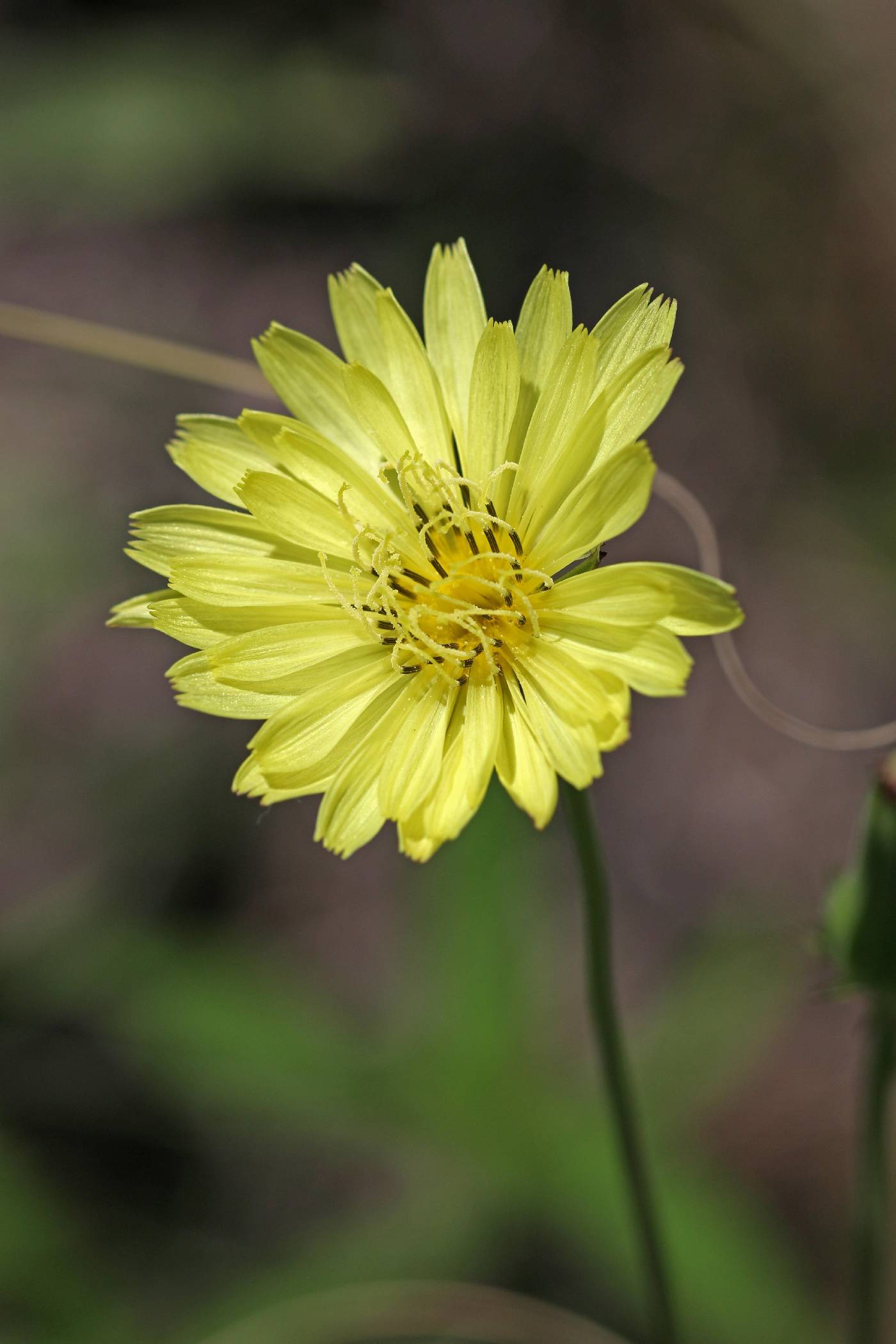Pyrrhopappus
|
Family: Asteraceae |
Annuals or perennials, 5-100+ cm; taprooted or rhizomatous (roots producing tuberiform swellings in P. grandiflorus). Stems usually 1, sometimes 2-5+, erect, unbranched or branched proximally and/or distally, glabrous or pilosulous. Leaves basal or basal and cauline; basal ± petiolate, distal usually sessile; blades oblong, elliptic, or ovate to lanceolate or linear, margins entire or dentate to pinnately lobed (faces usually glabrous, sometimes pilosulous near margins). Heads borne singly or in loose, corymbiform arrays. Peduncles not inflated distally, sometimes bracteate. Calyculi of 3-13+, deltate to subulate or filiform bractlets. Involucres cylindric, 4-5[-8+] mm diam. Phyllaries 8-21+ in ± 2 series (reflexed in fruit), linear, equal, margins often scarious, apices acute (often thickened or bearing keel-like flaps near tips). Receptacles ± convex, pitted, glabrous, epaleate. Florets (20-)30-150+; corollas yellow to whitish. Cypselae reddish brown to stramineous, bodies ± fusiform, beaks (± concolorous with bodies) ± filiform, fragile, grooves (or broad ribs) 5, faces transversely rugulose, glabrous; pappi (borne on discs at tips of beaks) persistent, double: outer coroniform (of whitish, relatively short, spreading, sometimes curly, hairs), inner of 80-120+, rufous to stramineous, subequal, barbellulate bristles in 2-3+ series. x = 6. Some plants from Mexico that have been called Pyrrhopappus multicaulis de Candolle (type from Mexico) may be distinct at species rank from P. pauciflorus (see R. McVaugh 1984). Almost all botanists who have dealt with the biology or floristics of pyrrhopappuses have remarked similarities among the taxa and/or difficulties with identification of some specimens. Some botanists have noted that 'interspecific' hybridizations are common (D. K. Northington 1974; B. L. Turner and K. J. Kim 1990; and works cited therein).
Fls all ligulate and perfect, yellow, numerous; invol campanulate or narrower, calyculate, the inner bracts corniculate-appendaged near the tip; achenes oblong or linear, subterete or fusiform, with 5 broad, cross-rugulose ridges and as many narrow grooves, contracted above into a long, slender beak, which bears a ring of minute, soft, white, reflexed hairs just beneath the pappus of numerous sordid or rufescent capillary bristles. 3, N. Amer. Gleason, Henry A. & Cronquist, Arthur J. 1991. Manual of vascular plants of northeastern United States and adjacent Canada. lxxv + 910 pp. ©The New York Botanical Garden. All rights reserved. Used by permission. |

